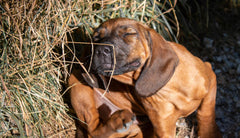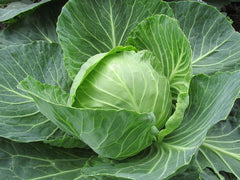
Whiskers are one of the key identifying features of our beloved canine and feline pals. There are a lot of different kinds of animals with whiskers, but the focus here will be on dogs and their whiskers. We will cover all of the bases about dog whiskers, such as “What is the purpose of whiskers?” and “trimming dog whiskers”. All of your burning questions about dog whiskers will be covered, and then some.
What are Whiskers?

Whiskers are specialized hairs that grow specifically around a dog's muzzle close to the snout, and just above their eyes. These special hairs are deeply rooted into the tissues of the face and highly innervated (full of nerve cells) at their bases. These sensitive hairs help a dog to better sense the environment around them.
Some researchers who have done work to better understand dog whiskers have determined that they are nearly as sensitive as the fingertips of a human hand. You’ve probably noticed a dog blinking or flinches if you’ve ever touched their whiskers by accident. Whiskers are very different from the rest of a dog's fur for these reasons.
How do Whiskers Work?

Dogs are hunters by nature, meaning they have highly evolved senses to help them track their prey. These senses include the upper hand that their whiskers give them while they are on the hunt. The deep, innervated roots of whiskers transmit sensory information to the dogs brain whenever the whiskers come in contact with something in the dog's environment. They are essentially an extension of the dog’s eyes as well as their sense of touch.
Nearly half of a dog's brain is used for mapping what their whiskers feel in their environment around them. Dog whiskers are so sensitive they can easily sense even the slightest change in air current around them. In addition to feeling objects around them, dogs’ whiskers are sensitive enough to pick up on changes in vibrations in the air around them.
Dogs have whiskers located above their eyes in addition to the ones around their muzzle. These whiskers by their eyes exist to give them a forewarning about anything that may be about to impact their eyes. Similar to how eyelashes work for humans, how we reflexively blink when even the smallest particle comes in contact with our lashes.
You may have even noticed your dog’s whiskers moving when they’re sniffing around. This is because they can basically point their whiskers in the direction of an object that they are interested in investigating. Dogs are actually naturally foresighted, which may come as a surprise to some individuals. This means that their vision of things that are up close is rather poor. That’s where their whiskers around their muzzle come into play. They help to paint a clearer picture of the objects that are up close to them.
Why Do Dogs Have Whiskers?

As stated above, dogs are born natural hunters, and have used their whiskers to track down and capture prey for centuries. Some dogs' snouts are much bigger than others. These large muzzle areas block a significant portion of their visual field, which is where the whiskers come into play. Dog whiskers help them to fill in the blanks where they cannot see in front of themselves because of their muzzle.
Dogs also use their whiskers to express their body language. If you pay attention to your dog close enough you will learn different moods or emotions that they are expressing through their whiskers. For instance, if your dog is feeling threatened you will notice their whiskers pointing forward, in the direction of the perceived threat.
What Kind of Grooming/Maintenance do Whiskers Need?

When it comes to hygiene, whiskers don’t actually need any sort of grooming or upkeep whatsoever. Vets and groomers actually advise against doing anything grooming-wise with whiskers. Some groomers will cut some whiskers upon request, only for aesthetic purposes upon request.
It won’t hurt your dog if you cut their whiskers by accident while grooming, but it’s not recommended. This is because it can cause them some confusion or disorientation to a degree in their environment. Since they are so used to using their whiskers to navigate their surroundings.
Conclusion
Dog whiskers are more important to your dog than many people give them credit for. Contrary to popular belief, whiskers aren’t just a decorative feature on your dog’s face. They serve an important purpose to your dog other than just making them look even cuter.
As a dog owner you might wonder whether you should be maintaining your dog’s whiskers with your regular grooming practices, but you infect don’t need to do any grooming when it comes to your dog’s whiskers. Originally used as a natural hunting tool, whiskers still help dogs navigate their environment and understand the world around them to this day.
What are dog whiskers for?
Do dog whiskers grow back?
Do all dogs have whiskers?
Yes, all dogs have whiskers. Dogs are born with whiskers present and will continue to have and regrow them throughout their entire lifetime. There isn’t a particular point in their life where they begin to grow or even cease to grow.
Check out our blog and follow me on LinkedIn to stay up-to-date!





Comments
Do you know why my dog would have whiskers that grow on her back behind her shoulder blades?? Can’t seem to find anything. Thank you!